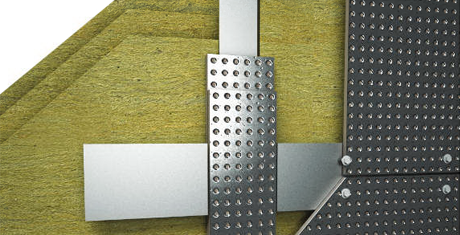Partitions and Barriers

Partitions and Barriers
- External walls
- Single skin barriers
- Metal framed partitions
The DURASTEEL® systems offer high dimensional stability with exceptional moisture resistance as well as being able to meet specified acoustic, wind load, impact and blast performance requirements.
The combination of properties makes DURASTEEL® partitions and barriers ideal for use in the most demanding application areas with up to 240 minutes fire resistance.
More information available in Chapter 5 of our Fire Protection Handbook and Technical Data Sheets. View our Durasteel® videos.
Partition Design Considerations
Depending upon its situation and function within a building, a wall may need to fulfil different requirements in the event of fire. Fire resisting walls used for partitioning buildings and enclosing compartments will be required to provide a barrier to the passage of fire from one side to the other or both sides. The wall must therefore be able to satisfy each of the relevant criteria (integrity, insulation and if the wall is load bearing - load bearing capacity) from either side for the prescribed period.
Factors for consideration when determining the correct specification to ensure a wall or partition will provide the required fire performance include:
- Nature and thickness of facings
- Studwork and fixings
- Compartmentation at head of wall
- Deflection
- Partition length
- Load bearing
- Cavity insulation
- Service penetrations
- Light switches and electrical sockets
- Fire doors and glazing
- Protected zones
- Concealed spaces
External Wall Design Considerations
The proximity of a building to the relevant (facing) boundary determines the probability of it being a danger to other buildings on adjoining sites or of it being at risk from a neighbouring building on fire. Building Regulations and supporting statutory and guidance documents, specify different fire resistance periods for external walls depending upon their distance from the relevant boundary.
Where the walls are required to provide fire resistance only from the inside, loadbearing capacity and integrity are required to be satisfied for the full period; whereas insulation is required for only 15 minutes (Scottish Building Regulations may require different periods of fire insulation).
Satisfactory constructions will be very different from those required to maintain insulation for the full period and where fire resistance is required from either side.
The following points should be considered when determining the correct specification to ensure an external wall will provide the required fire performance:
- Distance from the relevant boundary
- External cladding
- Structural steel
- Single storey buildings
- Cavity barriers
- Thermal insulation
- Impact resistance
- Wind loading
Test Details:
Partitions: non-load bearing partitions should normally be tested or assessed in accordance with BS 476: Part 22: 1987 for integrity and insulation when exposed to fire from either side.
Load bearing partitions (walls) should normally be tested or assessed in accordance with BS 476: Part 21: 1987 for loadbearing capacity, integrity and insulation.
External Walls: non-load bearing external walls should normally be tested or assessed in accordance with BS 476: Part 22: 1987 and are required to satisfy the failure criteria of integrity and insulation when exposed to fire from either side. In some instances there will be additional criteria concerning the heat radiation from the unexposed face of the walls.
